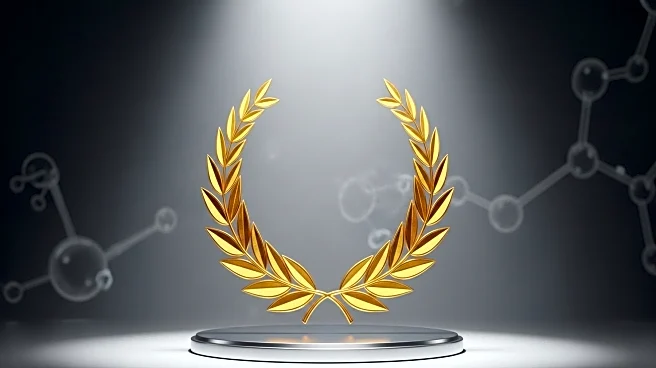What's Happening?
Researchers from the University of Oulu and the Geological Survey of Finland have discovered gold nanoparticles within the needles of Norway spruce trees in Finnish Lapland. This finding is linked to bacteria living inside the needles, which may influence the accumulation of gold in trees. The study focused on trees growing above a known gold deposit at the Kittilä gold mine. The researchers collected 138 needle samples from 23 trees, using advanced microscopy and DNA sequencing to identify gold particles and associated bacterial groups. The presence of gold nanoparticles was confirmed in four trees, often found near clusters of bacterial cells embedded in biofilm. This discovery suggests that specific bacteria can transform soluble gold into solid particles within the needles, offering a potential new method for gold exploration.
Why It's Important?
The discovery of gold nanoparticles in tree needles could revolutionize mineral exploration by providing a greener and more precise method for locating gold deposits. By identifying specific bacteria associated with gold particles, researchers can enhance plant-based surveys, reducing the need for invasive drilling and minimizing environmental disturbance. This approach could be particularly beneficial in regions with restricted access or high environmental stakes. Additionally, the microbial processes observed in trees may have applications in water treatment systems, helping to remove metals from mining-impacted waters. The study highlights the potential for using biological systems in resource exploration and environmental management, offering a sustainable alternative to traditional methods.
What's Next?
Future research will focus on expanding the study to other plant species and different mineral deposits to validate the findings. Scientists aim to conduct direct, time-resolved experiments to observe the transformation of soluble gold into nanoparticles by microbes under controlled conditions. This will strengthen the case for using microbial fingerprints in mineral exploration. Researchers will also explore the seasonal variations and groundwater routes that influence gold accumulation in trees. The ultimate goal is to develop practical tools for field crews to use microbial signals in conjunction with traditional geophysical and geochemical methods, enhancing the accuracy and efficiency of mineral exploration.
Beyond the Headlines
The study opens up new avenues for understanding the complex interactions between plants and their microbial partners, known as holobionts. These interactions play a crucial role in nutrient and trace element movement, stress management, and mineral formation within plant tissues. By exploring these processes, scientists can gain insights into the ecological and evolutionary dynamics of plant-microbe relationships. The research also underscores the importance of interdisciplinary approaches in addressing environmental challenges, combining microbiology, geology, and ecology to develop innovative solutions for sustainable resource management.











